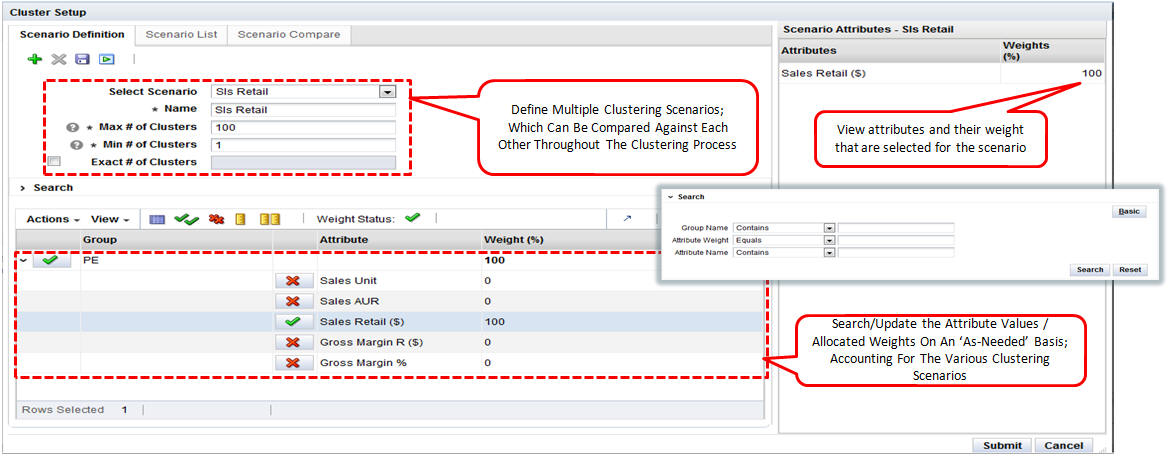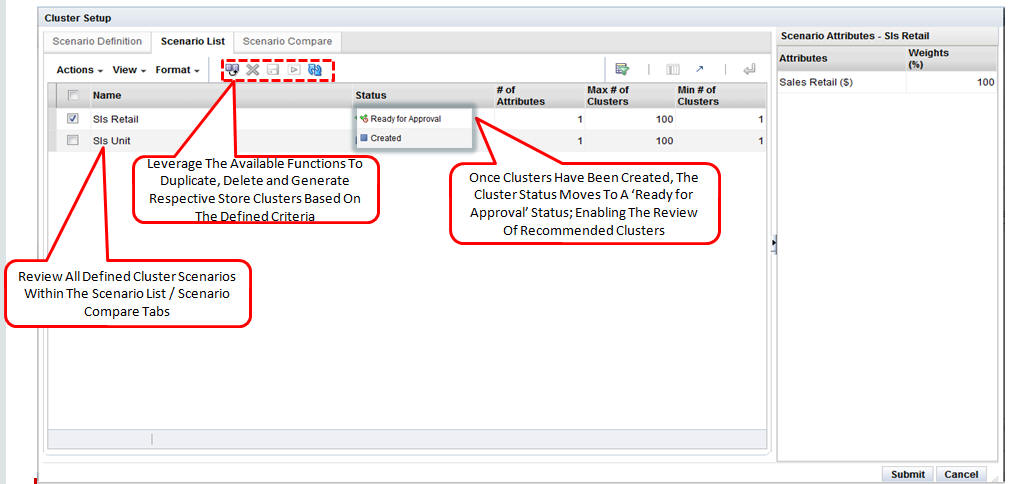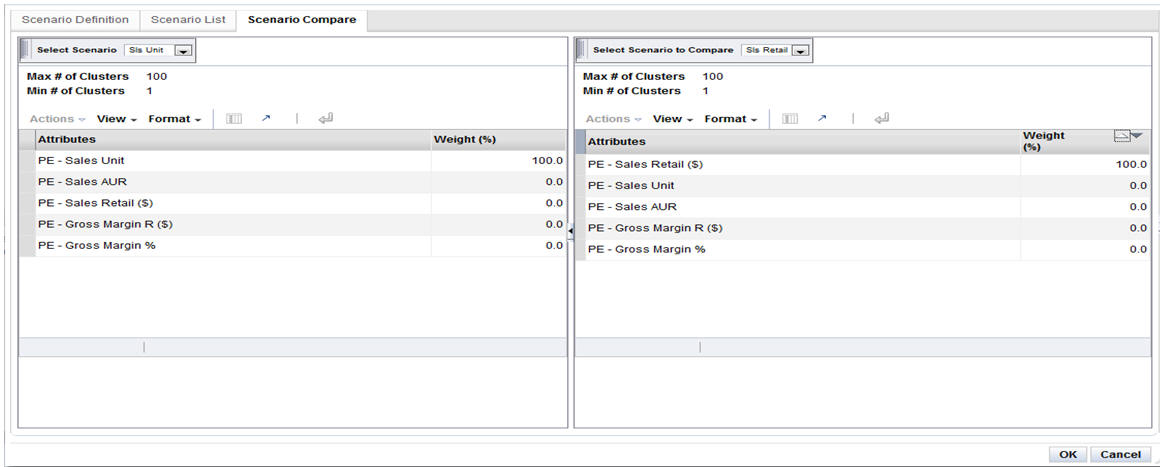Scenario Definition Section
This area has three tabs: Scenario Definition, Scenario List, and Scenario Compare.
Scenario Definition Tab
Figure 4-16 Clustering Scenario Definition

Description of "Figure 4-16 Clustering Scenario Definition"
The following information is needed to define a scenario.
Table 4-13 Scenario Definition
| Field Name | Description |
|---|---|
|
Select Scenario |
Select an existing scenario if you want to modify it. |
|
Name |
A unique name that identifies the scenario being defined. |
|
Max. # of Clusters |
Set the maximum number for the total number of clusters that can be generated. The application determines the optimal number of clusters during the generation process. |
|
Min. # of Clusters |
Set the minimum number for the total number of clusters that can be generated. The application determines the optimal number of clusters during the generation process. |
|
Exact # of Clusters |
Indicates that the exact number of clusters should be generated. The application does not determine the optimal number of clusters. |
Attributes
The Attributes table is used to define which attributes are included in the cluster criteria and the weights that should be assigned to each participating attribute. You can
-
search by attribute, attribute value, and attribute weight
-
assign equal weight to the selected attribute
-
assign weight to the selected attribute or attribute value
-
reset weights to default values
The following information defines the attributes that are participating or non-participating.
Table 4-14 Attributes
| Field Name | Description |
|---|---|
|
Participating |
A check in this column indicates that the attributes participate in the cluster criteria. |
|
Groups |
Identifies the group. |
|
Attributes |
A description of the attribute. |
|
Weights |
The weight assigned to the attribute. All participating attributes can have the same weight or each participating attribute can have a unique weight. The total of all the weights must add up to 100 percent. |
The Attributes toolbar, shown in Figure 4-17, includes the following functionality:
Table 4-15 Attribute Toolbar
| Function | Description |
|---|---|
|
Action menu |
Resets the weights to the default value overrides that the user provided during configuration. |
|
Weight status |
Provides the weight validation status. If the weights do not add up to 100 percent, then a warning is displayed and the scenario cannot be executed. |
|
Include or exclude attributes |
Any attribute with a weight equal to zero is not included in the clustering process. |
|
Normalize |
Scaling attribute weights to ensure that weights are valid. User-provided weights are normalized by applying a weighting average that adds up to 100 percent. |
Contextual Area
The contextual business intelligence lists a set of attributes and weights that the current scenario includes as the participating attributes for the clustering process.
Scenario List Tab
The Scenario List summarizes the characteristics for each scenario.
You can make a copy of a specific scenario in order to modify it in some way, delete a specific scenario, execute a specific scenario, or save a specific scenario. You can also refresh the scenario list in order to view the updated scenario status.
Table 4-16 Scenario List
| Field Name | Description |
|---|---|
|
Name |
The unique name that identifies the scenario. |
|
Status |
Created, Ready for Approval, Completed with Errors, Approved, Rejected. |
|
# of Attributes |
The number of attributes is defined by the Cluster by option you select and the weights you optionally assign. |
|
Max. # of Clusters |
If you provided a value for this in the scenario definition, that number is displayed here. |
|
Min. # of Clusters |
If you provided a value for this in the scenario definition, that number is displayed here. |
Scenario Compare Tab
You can select two scenarios from the list to compare. The scenarios you select from the Scenario list are shown side-by-side to facilitate the comparison.



